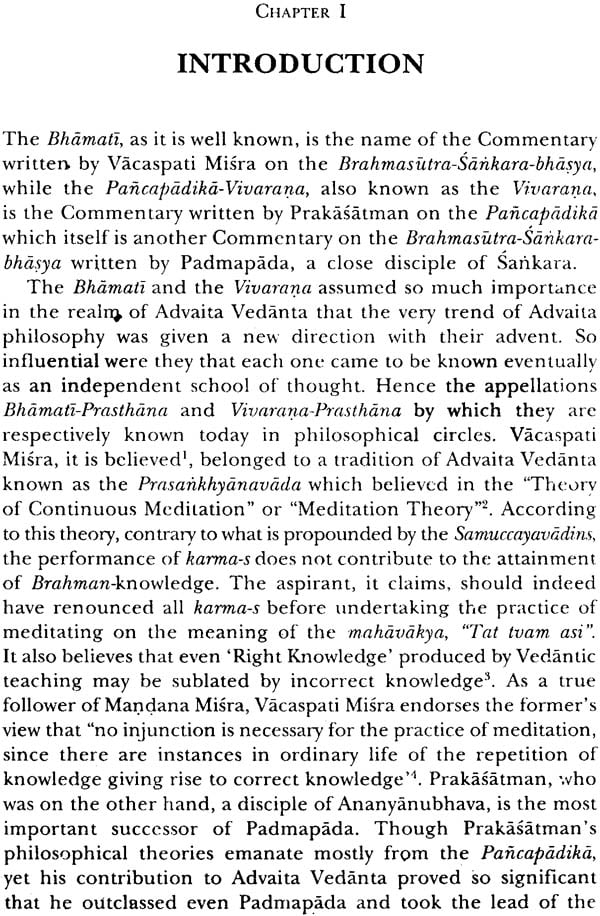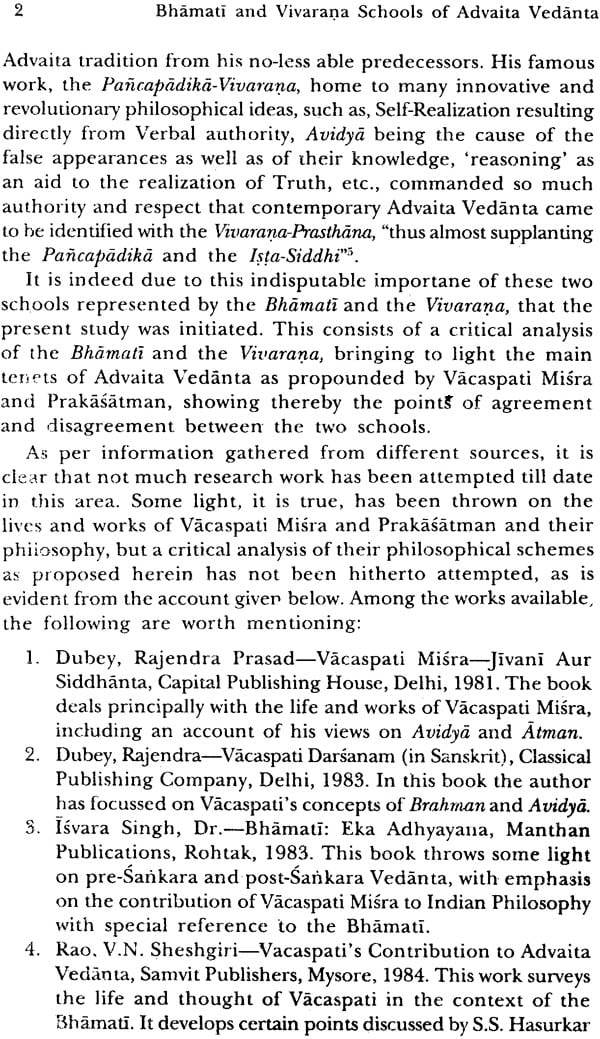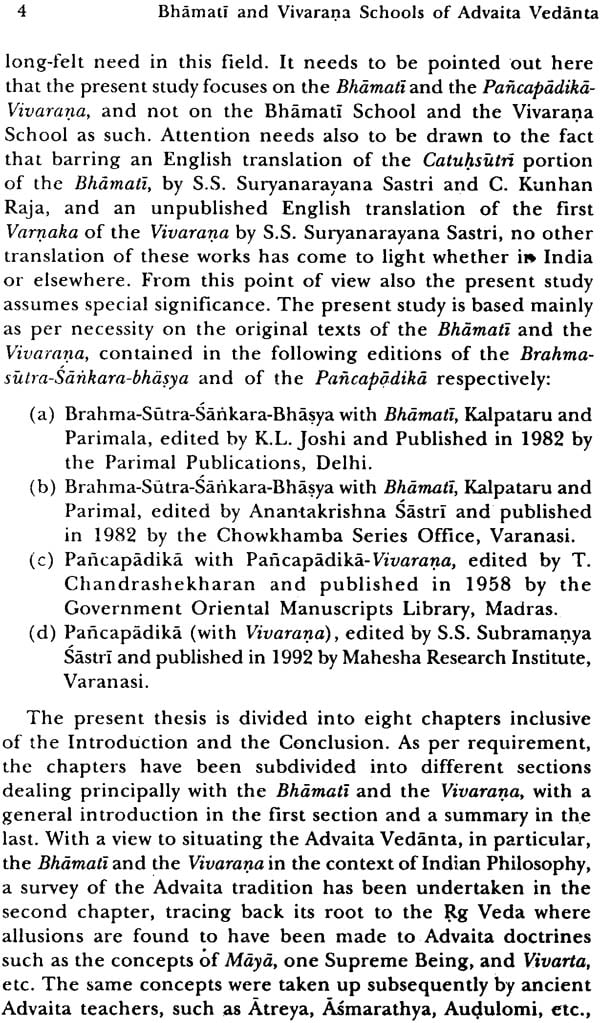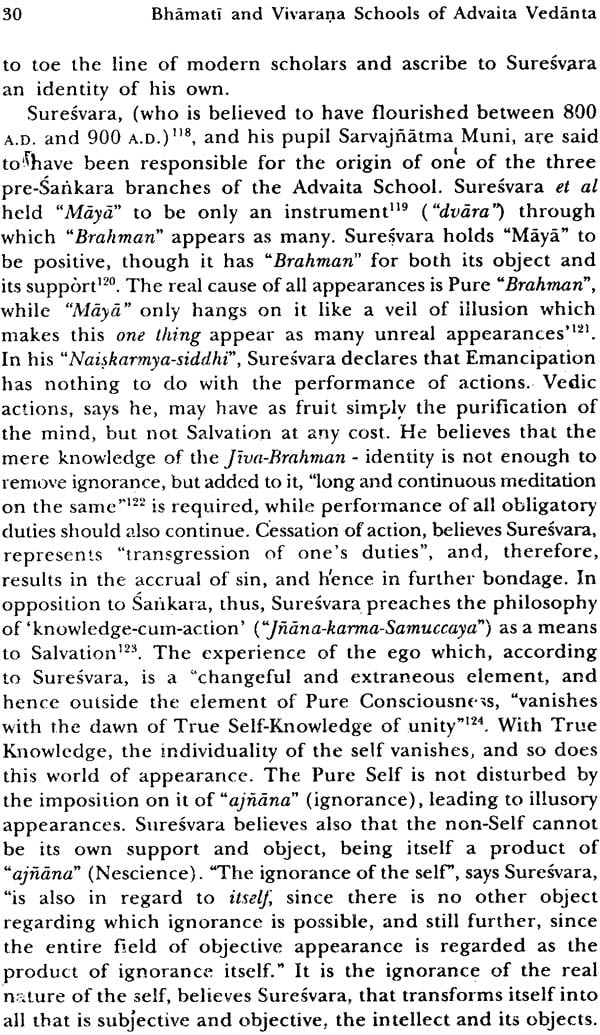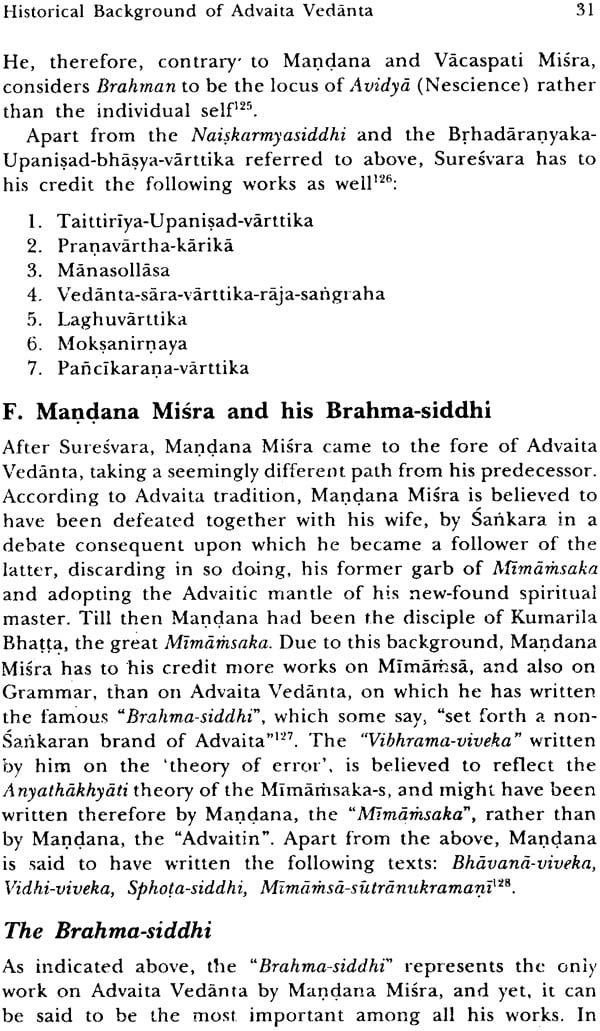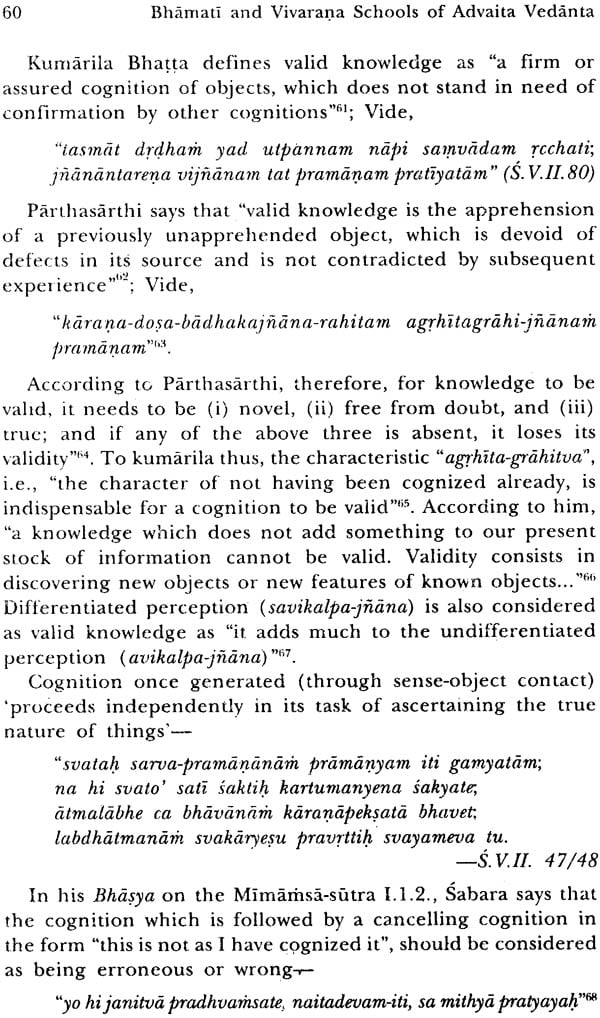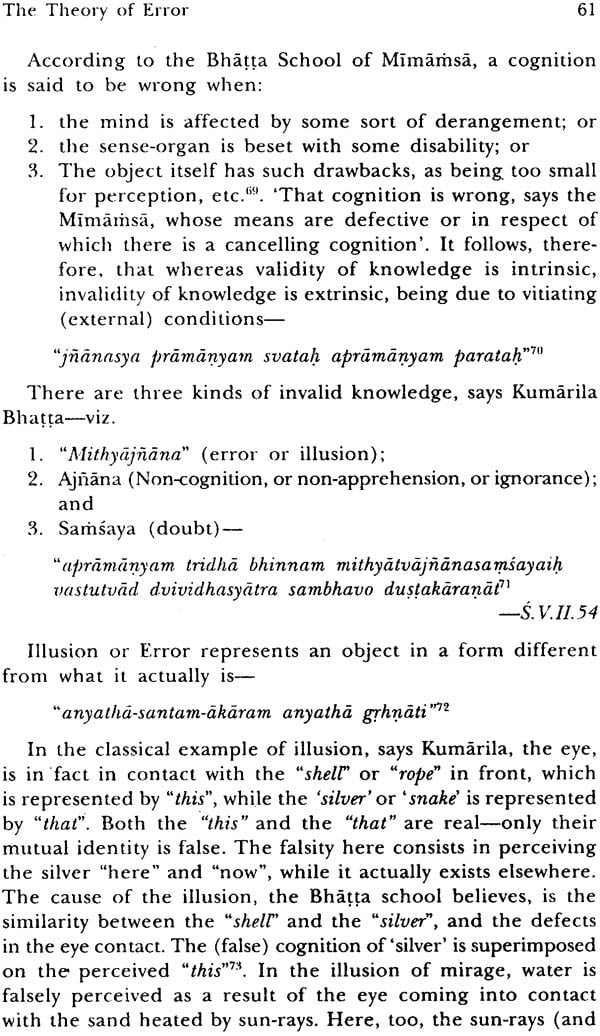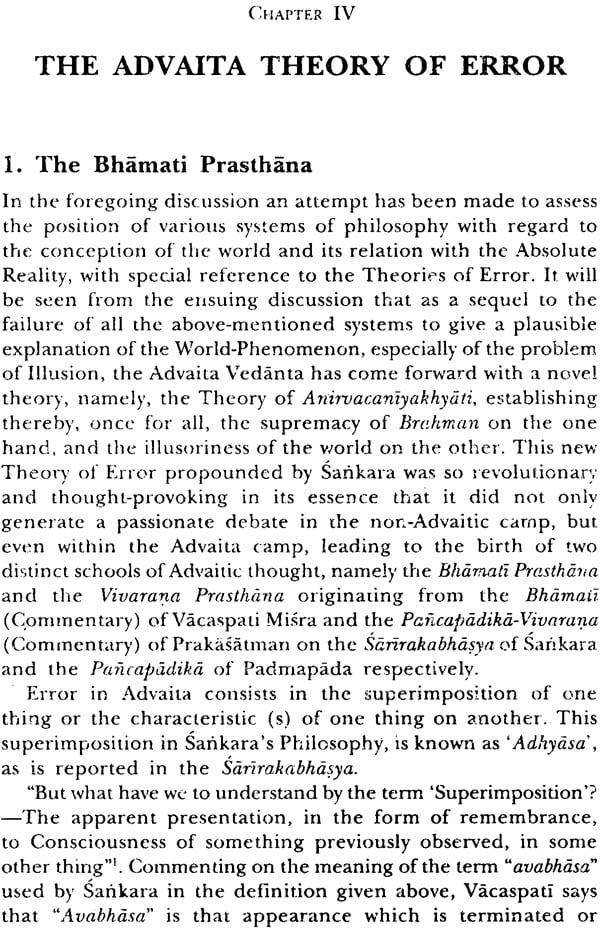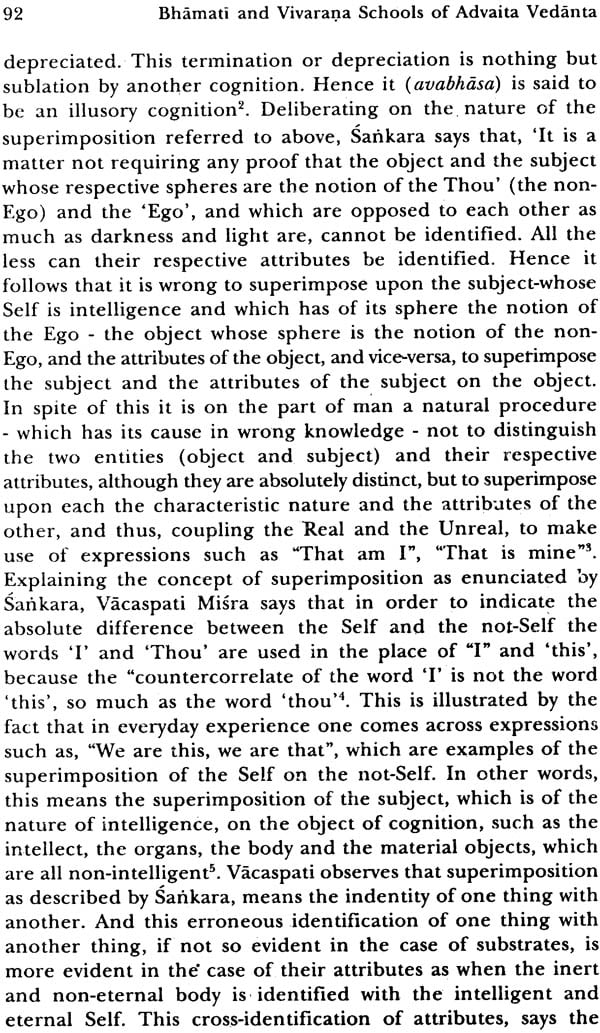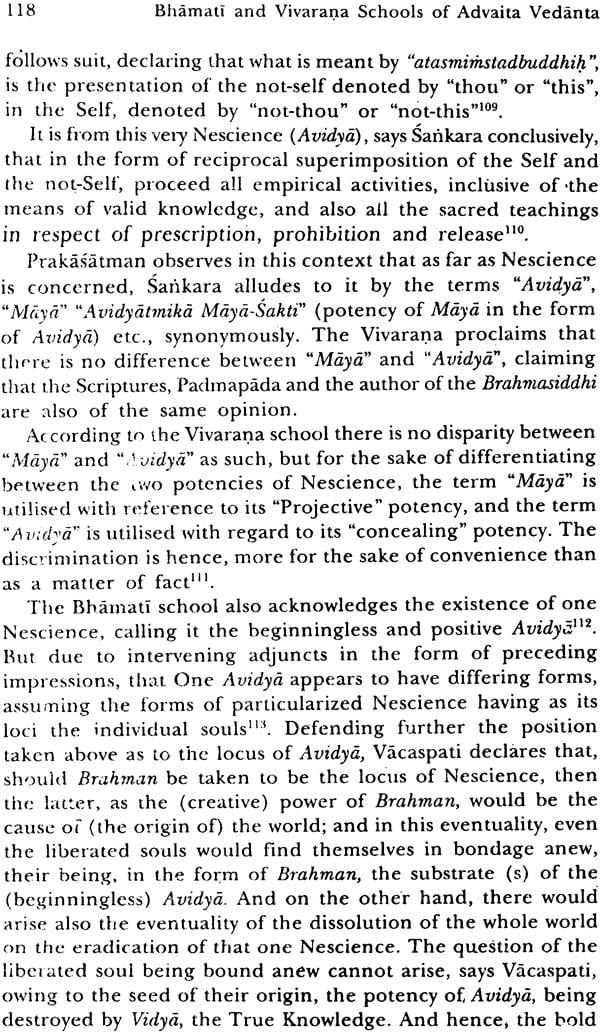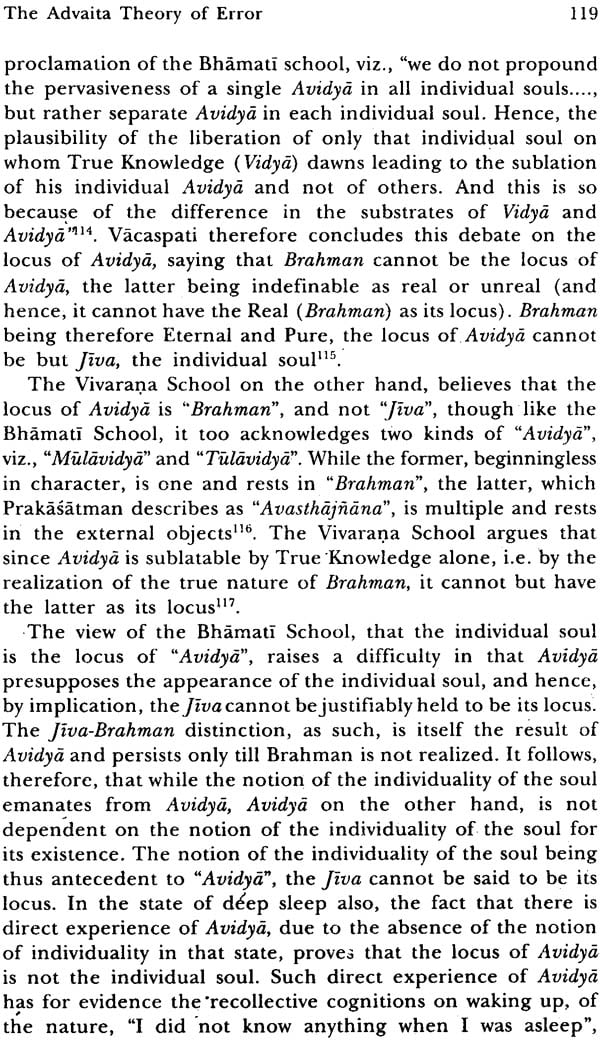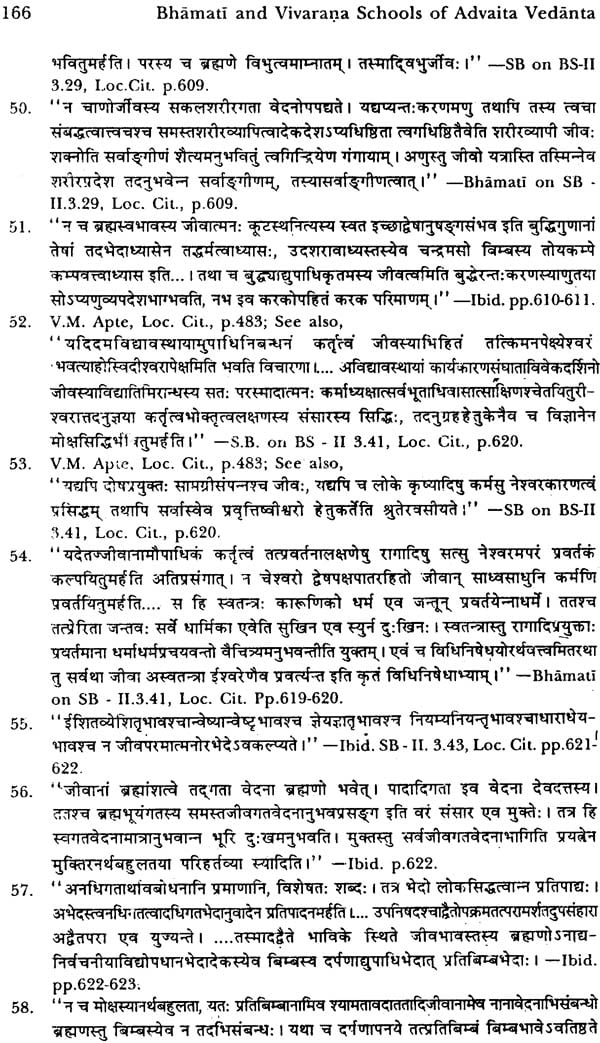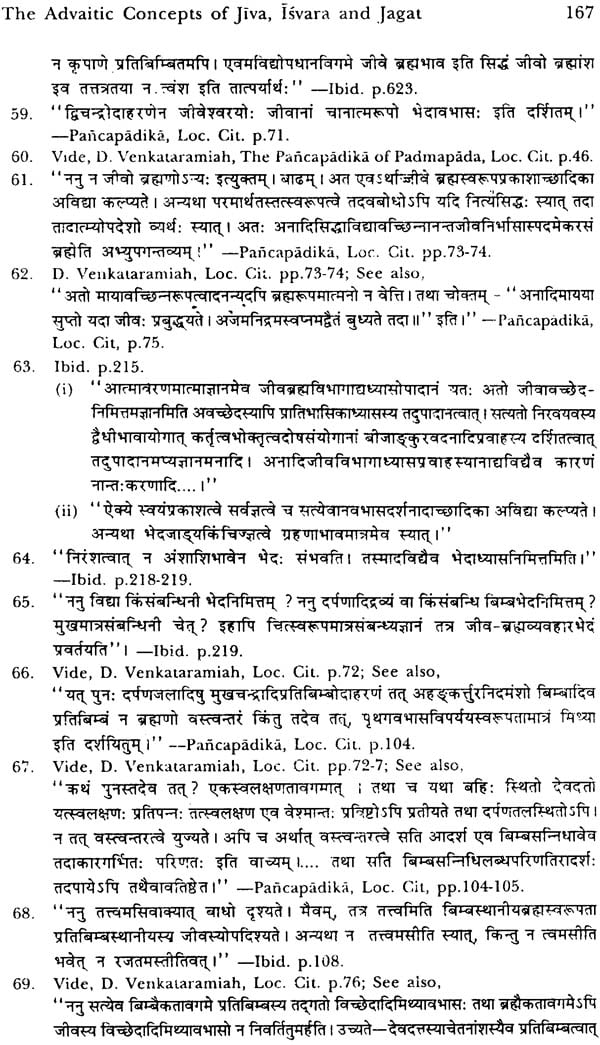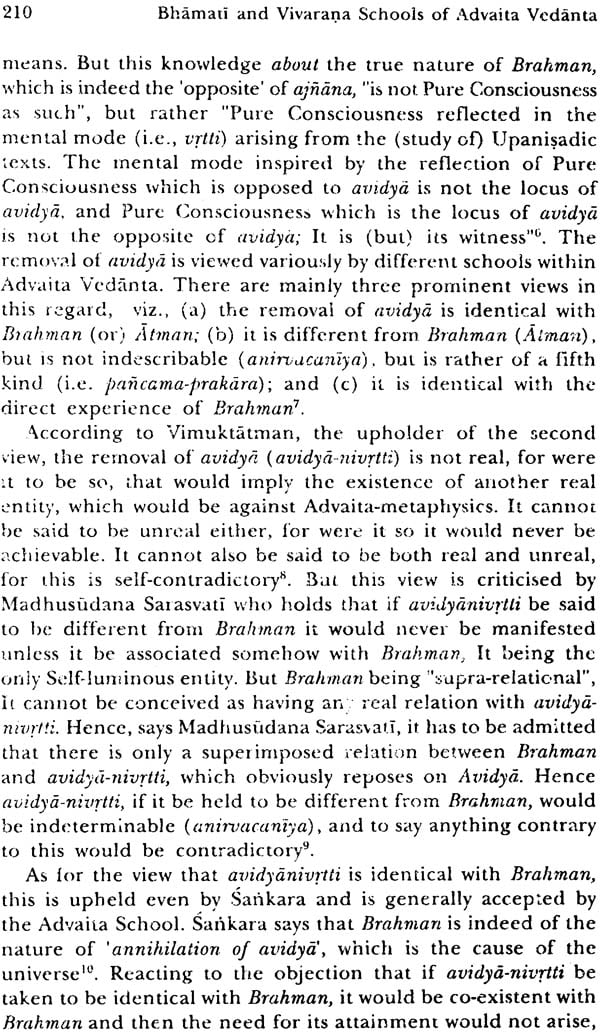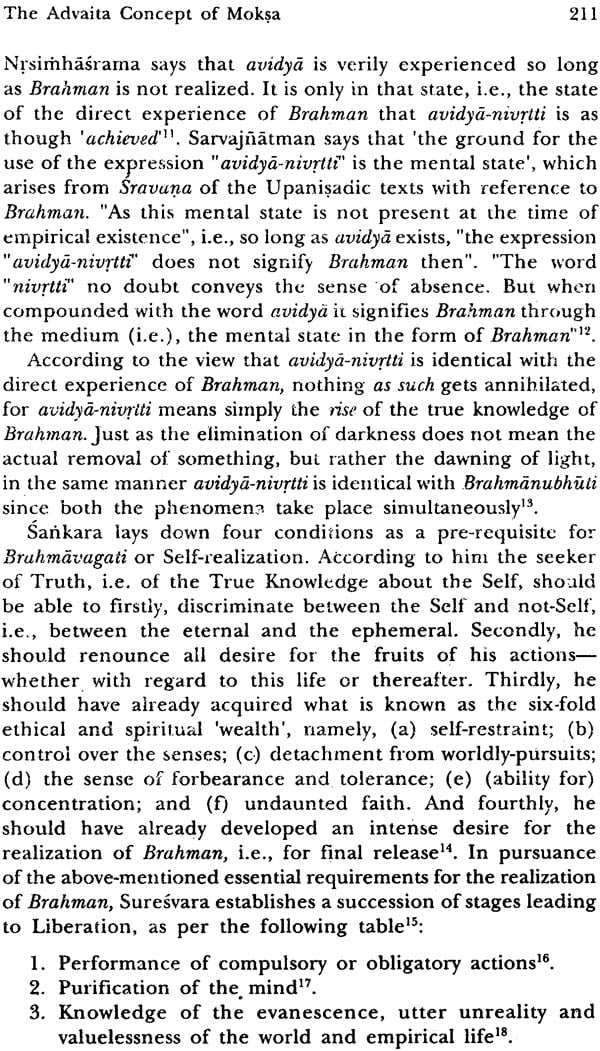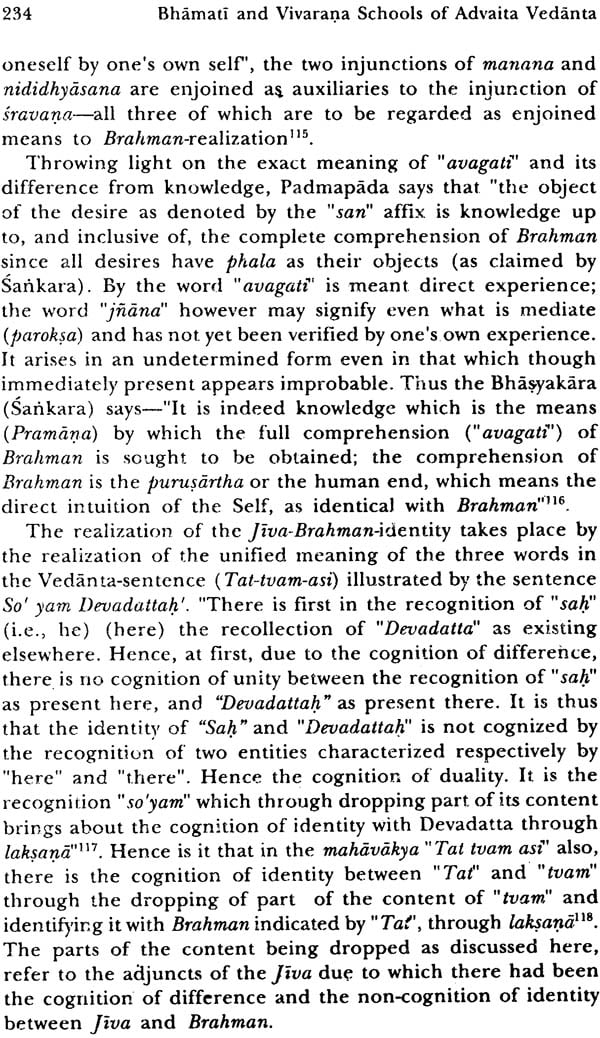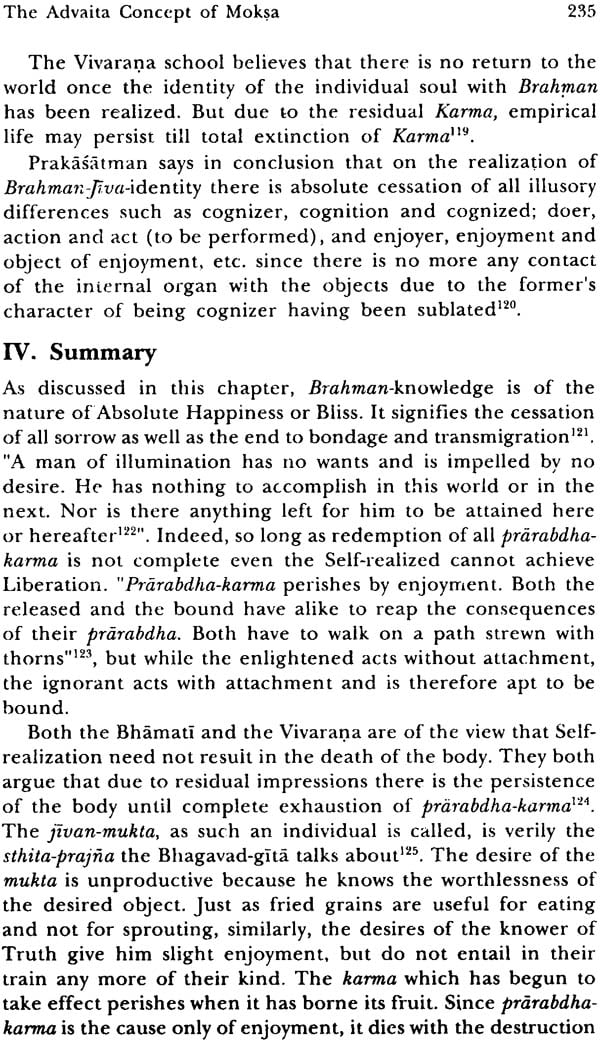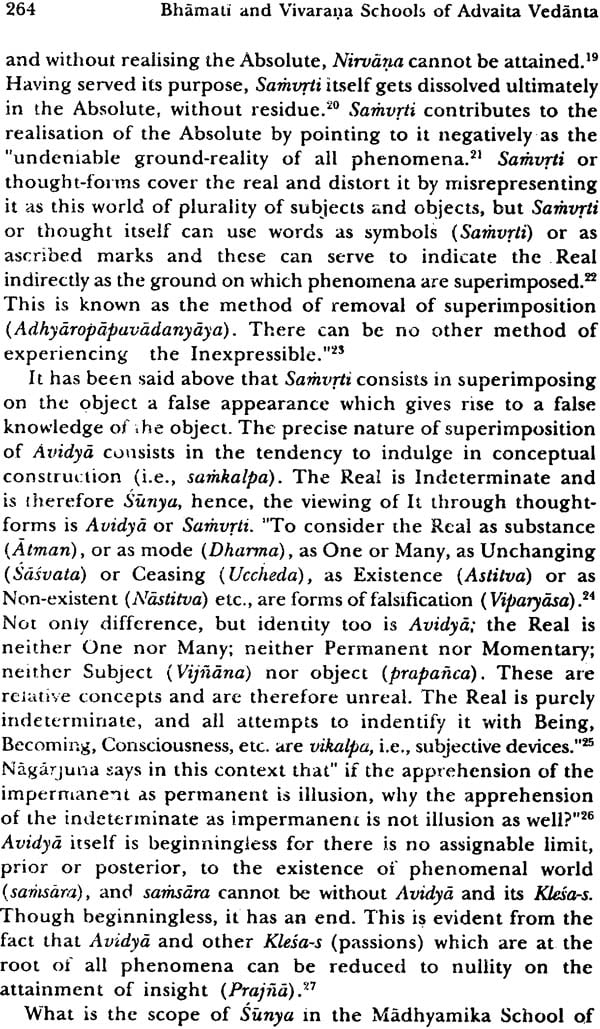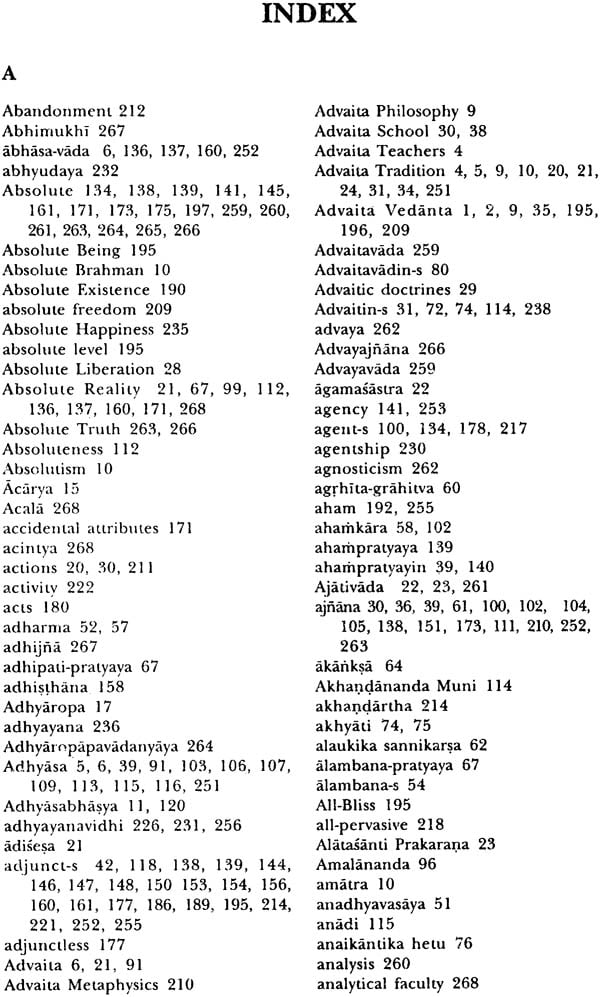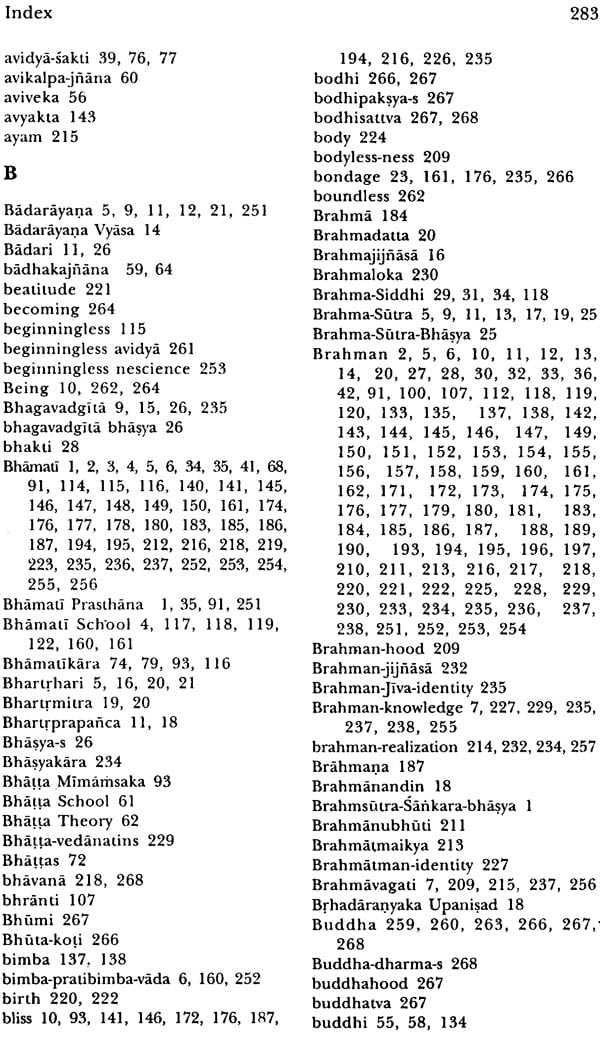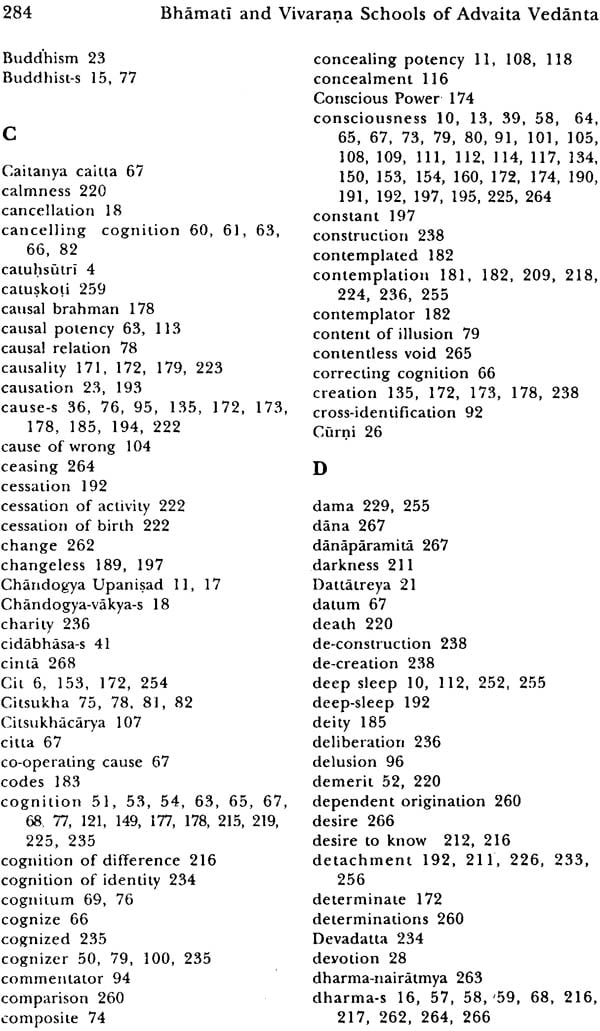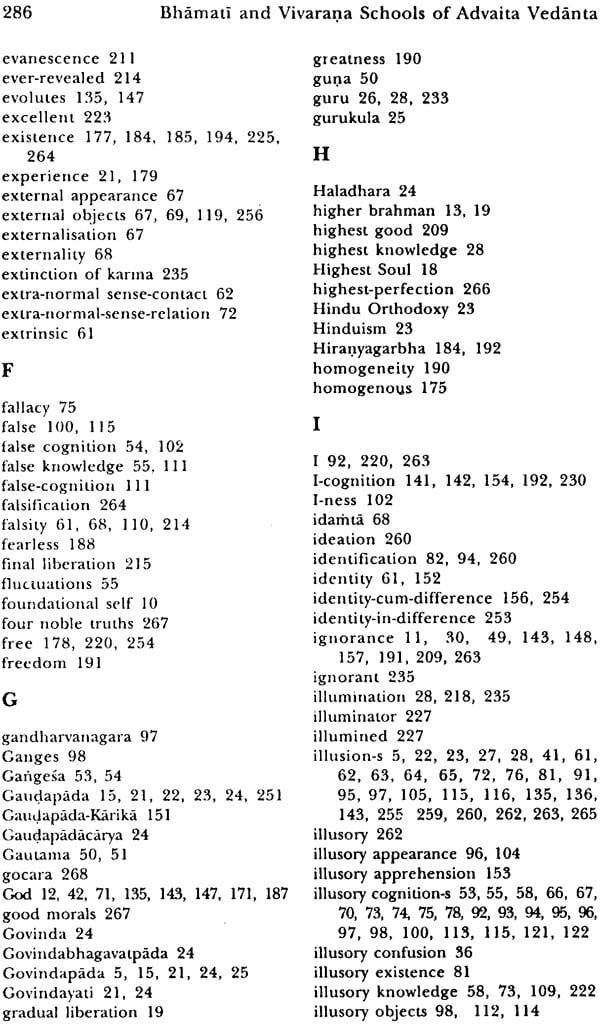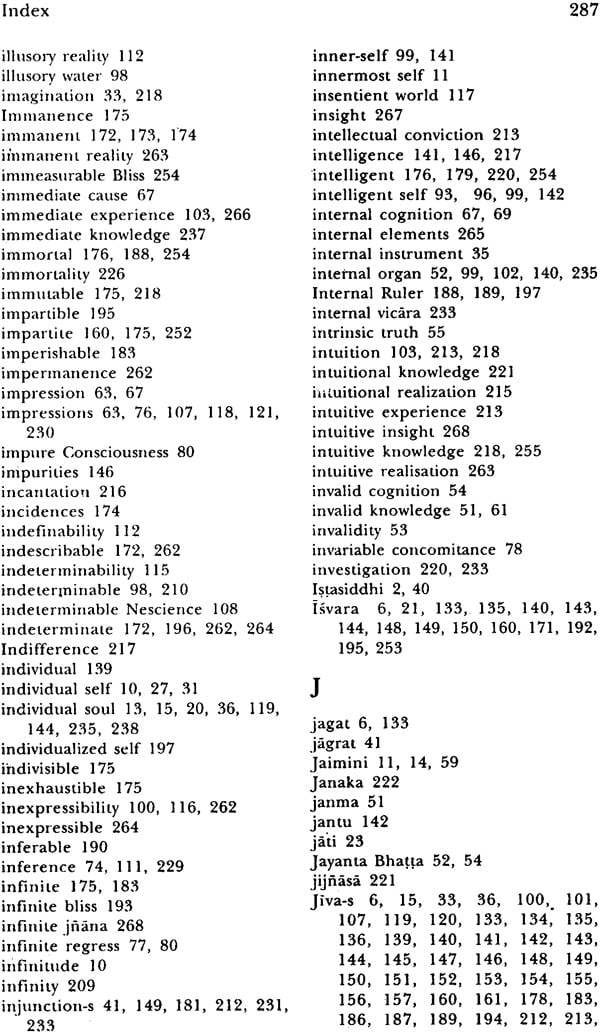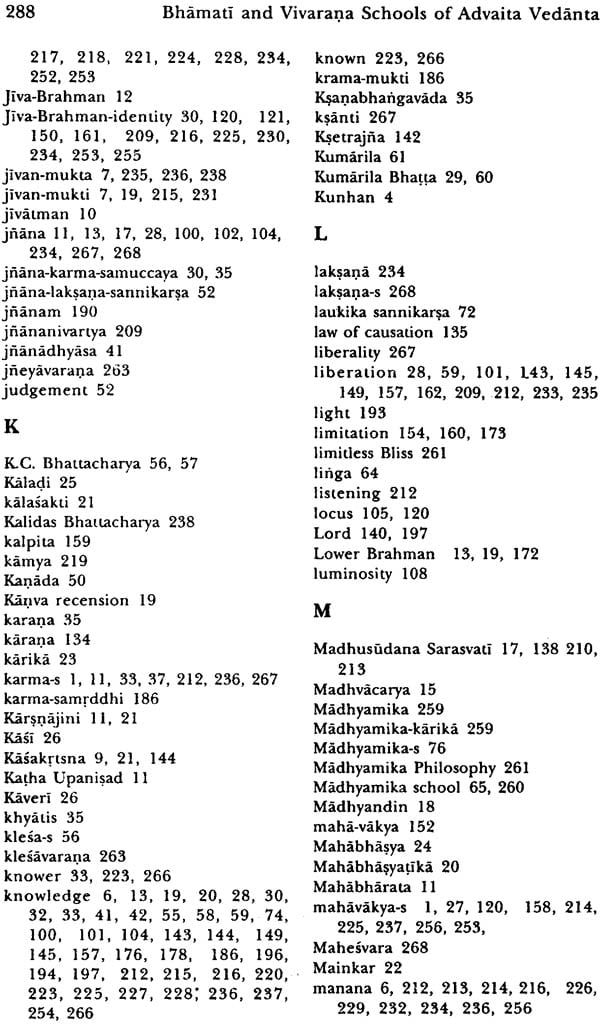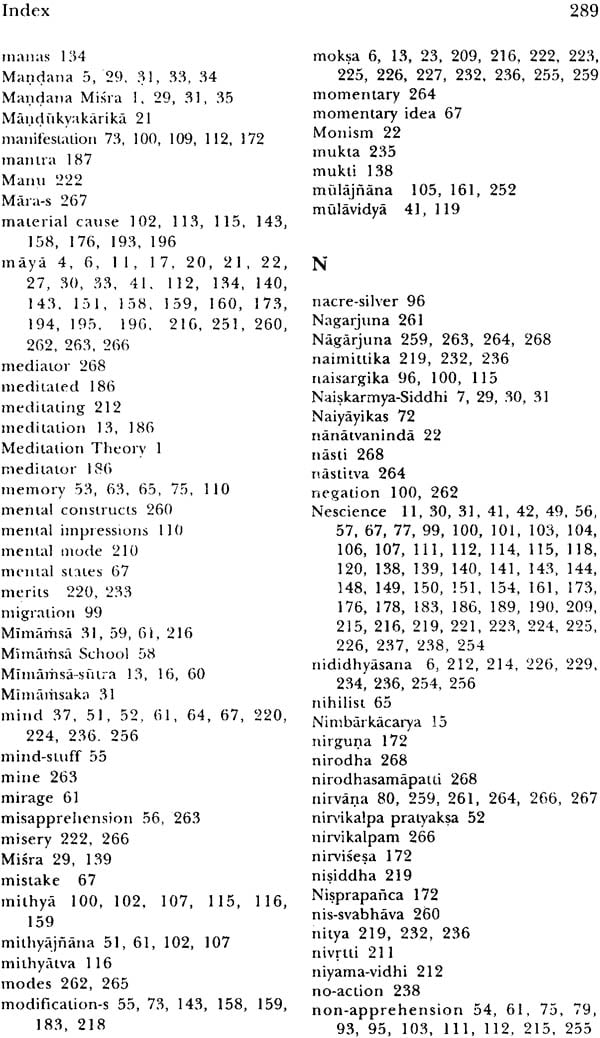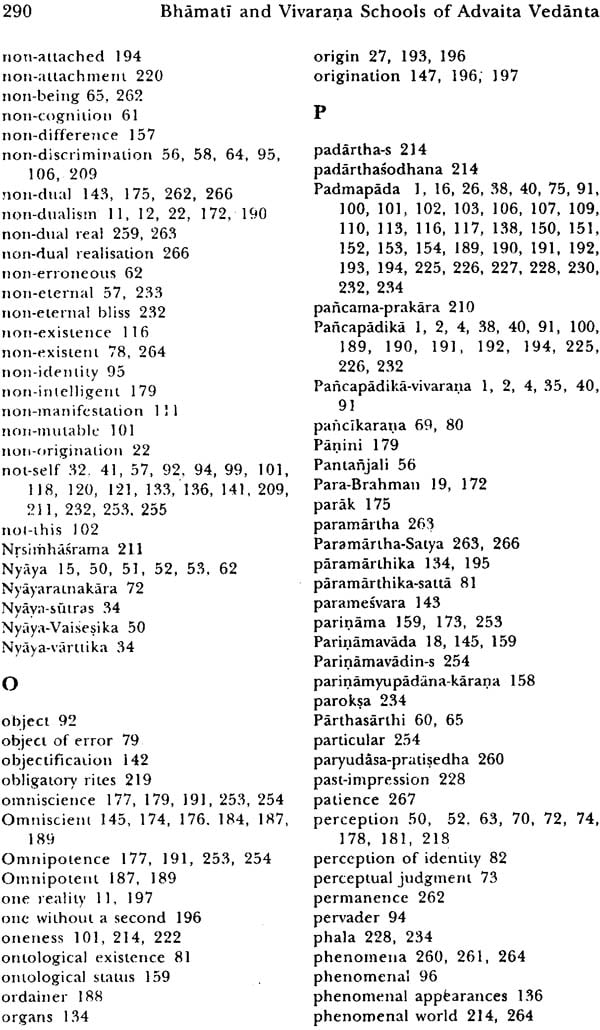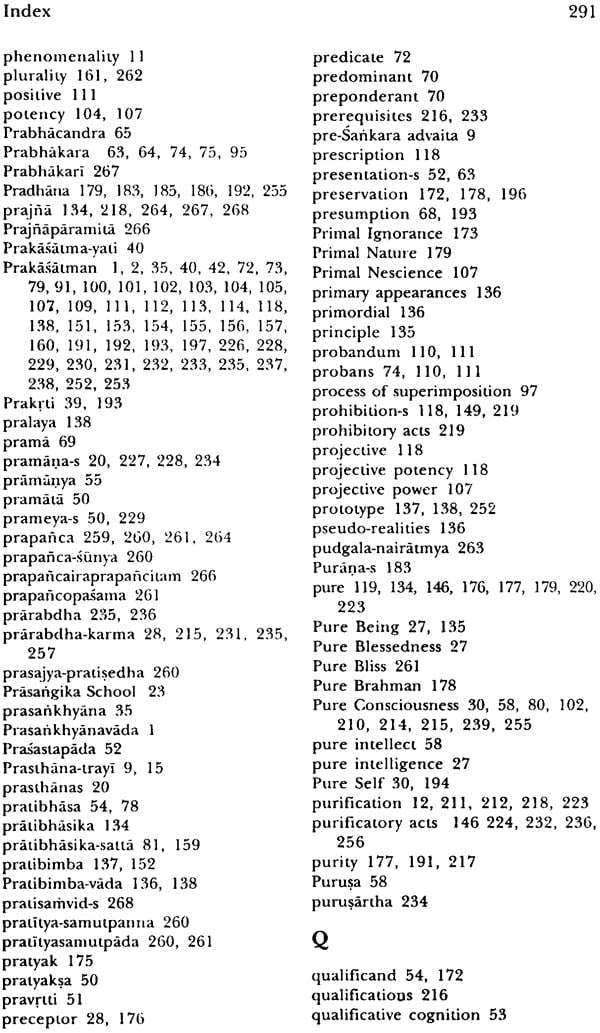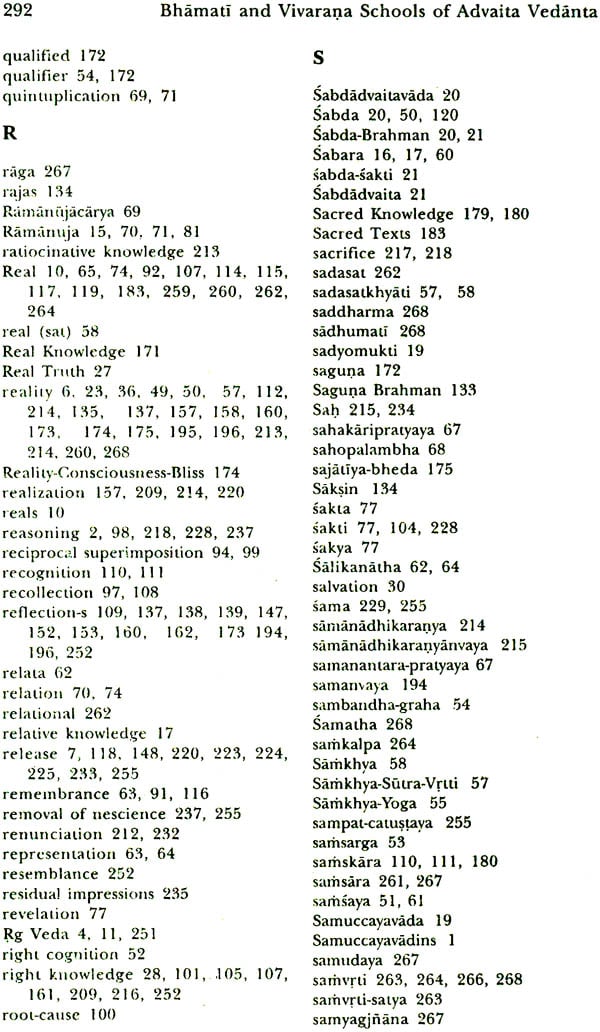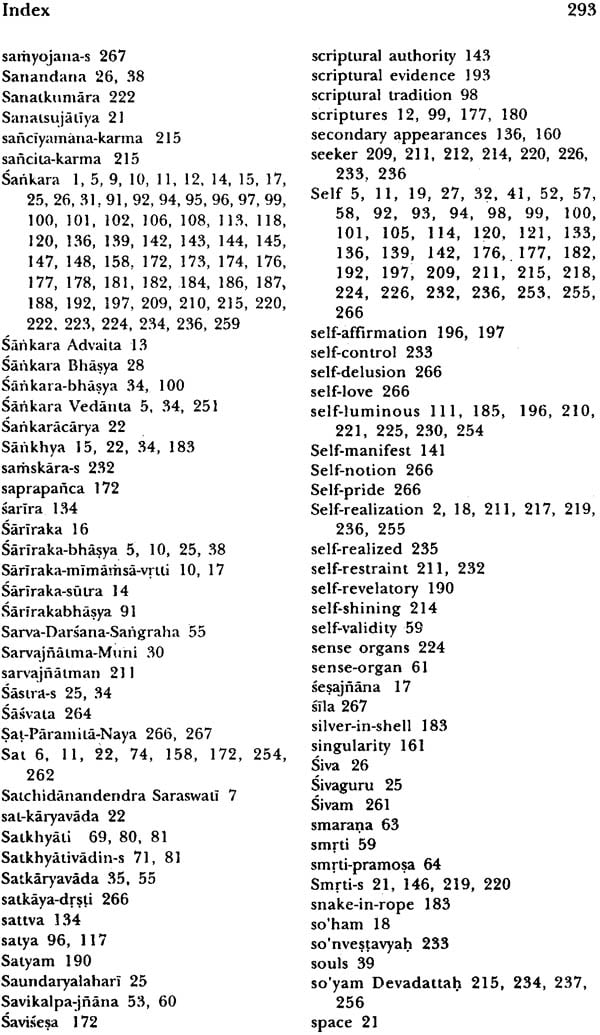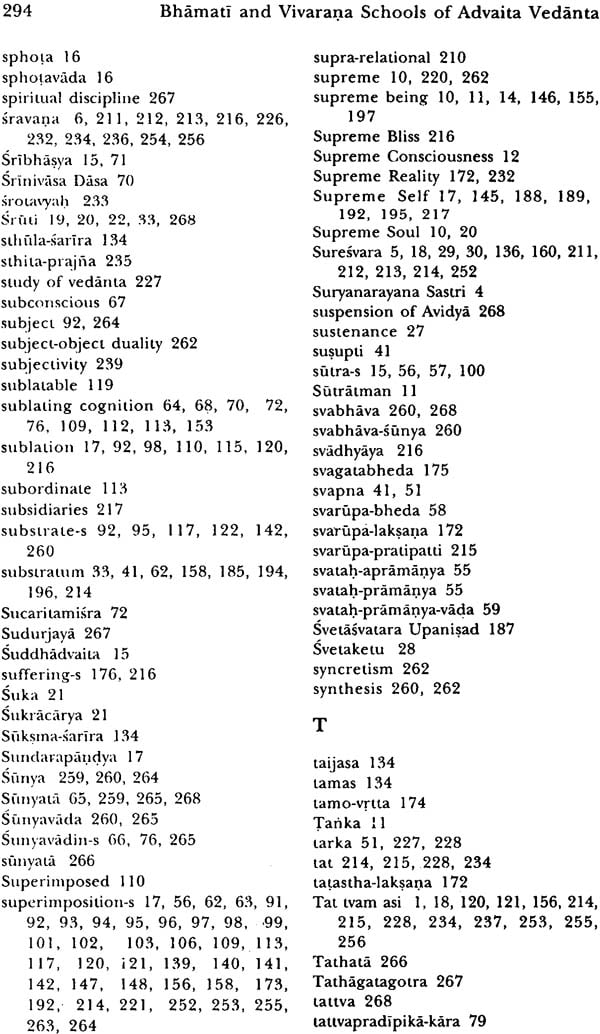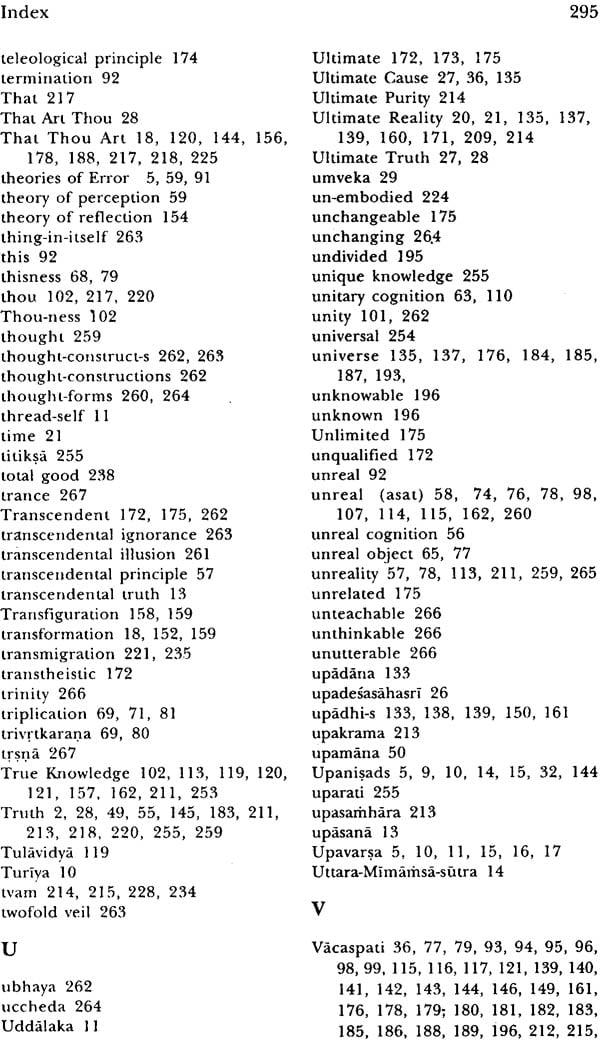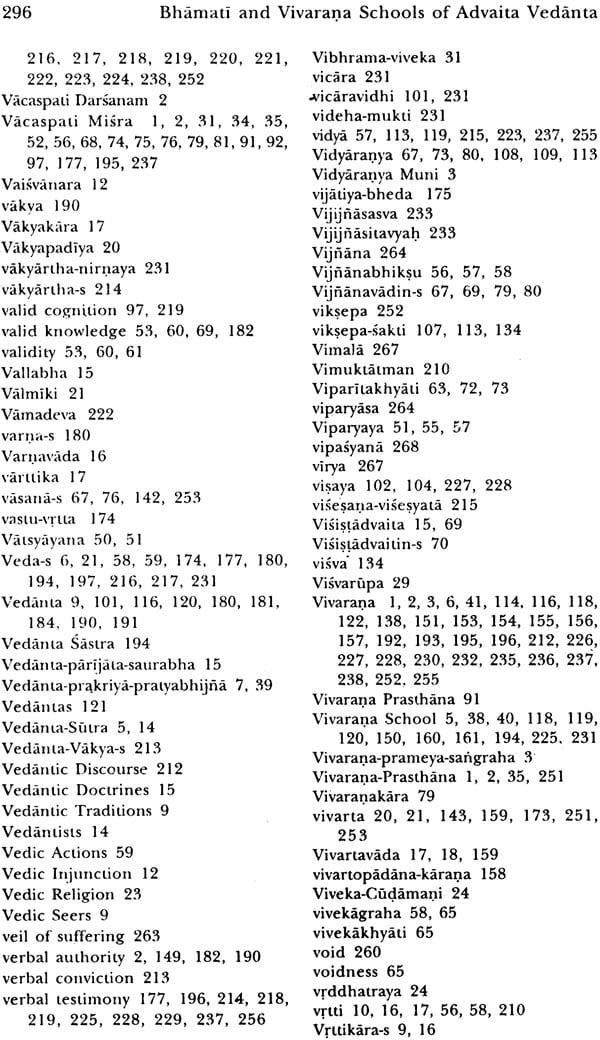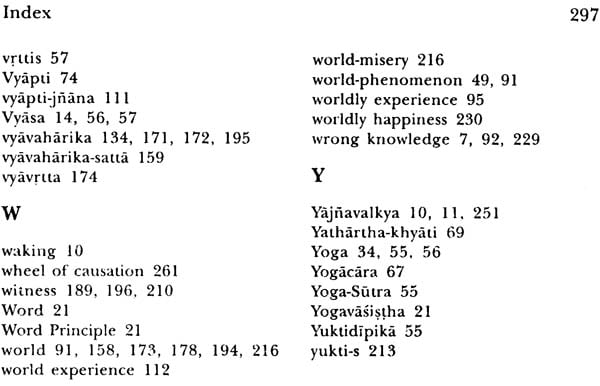
Bhamati and Vivarana Schools of Advaita Vedanta: A Critical Approach
Book Specification
| Item Code: | IDE816 |
| Author: | P.S. Roodurmun |
| Publisher: | MOTILAL BANARSIDASS PUBLISHERS PVT. LTD. |
| Language: | English |
| Edition: | 2010 |
| ISBN: | 9788120818903 |
| Pages: | 312 |
| Cover: | Hardcover |
| Other Details | 8.75" X 5.75" |
| Weight | 510 gm |
Book Description
From the Jacket:
This book is an attempt at presenting to the readers a critical analysis of the philosophy of Advaita Vedanta by comparing the views of the Bhamati and Vivarana Schools, the two most important protagonists of Sankara's philosophy, with a detailed study of the original texts. It begins with a survey of the historical development of Advaitic thought, starting right from the Vedas to end up with the modern period. In the successive chapters, the author delves into the problems of error, Jiva, Jagat, Isvara and their relation with Brahman, and the concepts of the Absolute and Moksa, with an additional note on Buddhist Absolutism.
The Author has taken up for discussion in this work the basic concepts of Advaita Vedanta as interpreted by Vacaspati Misra and Prakasatman, encompassing the concepts of Maya, Avidya, Adhyasa, Anirvacaniyata, Bimba-pratibimba-vada, Avaccheda-vada, Parinama-vada, Vivartavada, the Locus of Avidya, Brahmavagati, Jivanmukti, Videhamukti etc.
The arguments presented here in a logical manner backed by copious references have contributed in making the book very lucid and authentic. It is no doubt a must for research scholars of Advaita Vedanta and for all those interested in Indian Philosophy, and in Indian Spiritualism in particular.
About the Author:
The author is engaged in the field of Education for the past three decades and is at present Senior Lecturer and Head of the Department of Sanskrit, Indian Philosophy and Hindu Theology at the Mahatma Gandhi Institute of Mauritius. As a Government of India Scholar he joined the University of Delhi in 1980 to undertake an in depth study of Sanskrit and Indian Philosophy, which culminated in the successful submission by him of this work in 1999 as his Ph.D. Thesis, Dr. Roodurmun is among the rare scholars outside India engaged in the study and promotion of Sanskrit and Indian Philosophy.
Kanshi Ram teaches Sanskrit at Hans Raj College, University of Delhi, Delhi.
It gives me great pleasure in writing a few words about the work of Pulasth Soobah Roodurmun. I have gone through the work and I am of the opinion that it is a work of a mature thinking.
The aim of this work has been to present in clear terms the distinct views of Bhamati and Pancapadika-vivarana on various philosophical issues. These two great commentaries by two great philosophers, Vacaspati Misra and Prakasatman gave birth to the two schools of thought on Advaita Vedanta of Sankara, popularly known as Bhamati school and Vivara-a school.
The present author has selected some important issues from the Advaita Philosophy like the theory of error; concepts of Jiva,Jagat, Isvara, Brahman, and Moksa and has presented them with the views of both the schools in a very clear and cogent manner. He has been successful in highlighting both, the points of similarities and those of dissimilarities, between the views held by Vacaspati and Prakasatman, and has left it to the readers to draw conclusions independently. All the conclusions of the author are authenticated by citing relevant texts from the respective commentaries. This has enhanced the authenticity of this work. I am sure, this work will certainly help in understanding these two schools of Sankara-Vedanta in particular and the Advaita Vedanta in general. I hope that the book is received with enthusiasm.
While studying the Brahma-sutra-bhasya of Sankara at Post- Graduation level, I developed an interest in Advaita Vedanta thanks to the masterly treatment of the subject by scholars of the calibre of Dr. S.N. Nigam, Prof. B.R. Sharma, Prof. Raghunath Sharma and others. This interest was given a new fillip when I started studying the Bharnati from Dr. Kanshi Ram who, seeing my keen interest in the subject, suggested that I should do research in this very subject for my Ph.D. It was thus that the idea of undertaking an analytical study of the Bharnati and the Vivarana was envisaged which has materialized in the form of this thesis.
I am, therefore, grateful to my Supervisor, Dr. Kanshi Ram, Reader, Department of Sanskrit, Hans Raj College, for having initiated me into the present study, and for the pains taken by him to meticulously go into each and every detail of the thesis, and for giving valuable suggestions for betterment all through. It goes without saying that this study would not have been accomplished in time but for his continuous and tireless support. I am also thankful to the Department of Sanskrit of the University of Delhi, in particular, Prof. S.P. Narang, Head of the Department, for his technical advice and support; Prof. P. Kumar, for his tacit support; Prof. B.R. Sharma, for his active interest and encouragement; Prof. A. Kumar, for taking personal interest with regard to the research project and for wider suggestions given by him from time to time; Prof. M.M. Agrawal, for all help, consideration and moral support. A word of thanks is also addressed to Prof. R.R. Pandey, Head of the Department of Philosophy, Banaras Hindu University, for his constructive suggestions.
I would fail in my duty if I were not to pay my respects to Dr. Ramashraya Sharma, my M. Phil Supervisor, who has been all along a source of irispiration for me. To him, therefore, I wish to express my deep gratitude.
Thanks are also due to the Librarian and Staff of the Central Reference Library of the University of Delhi without whose co-operation this research work could not have been pursued successfully, and in the same breath, I want to convey a word of appreciation to the Principal and Staff of the Hans Raj College (University of Delhi) for all help and facilities extended to me.
The completion of this study was made possible by the financial and logistic support received from the Mahatma Gandhi Institute (Mauritius), the Tertiary Education Commission (Mauritius) and the University Grants Commission (Delhi). To all these institutions, and to Prof. Uttam Bissoondoyal, Director of the Mahatma Gandhi Institute in particular, I am therefore deeply indebted.
I would also like to express my gratitude to all the authors and Publishers whose works (as duly acknowledged) have contributed directly or indirectly to the writing of this thesis.
CONTENTS
| FOREWORD | vii | |
| PREFACE | ix | |
| ABBREVIATIONS | xi | |
| Chapter I: | INTRODUCTION | 1 |
| Chapter II: | HISTORICAL BACKGROUND OF ADVAITA VEDANTA | 9 |
| A. | Pre-Sankara Advaita | |
| B. | The Advent of Gaudapada and his Mandukya-Karika | |
| C. | Sankara's Guru-Govindapada | |
| D. | Sankara and his Doctrine of Non-Dualism | |
| E. | Suresvara and his Naiskarmya-siddhi | |
| F. | Mandana Misra and his Brahma-siddhi The Brahma-siddhi | |
| G. | Vacaspati Misra and his Bhamati Commentaries on the Bhamati Main Tenets of the Bhamati School | |
| H. | Padmapada and his Pancapadika The Pancapadika-prasthana | |
| I. | Prakasatman and his Pancapadika-vivarana Commentaries on the Pancapadika-vivarana Main tenets of the Vivarana School | |
| Chapter III: | THE THEORY OF ERROR | 49 |
| Section I: | Non-Advaita Schools | |
| A. | Theory of Error of Nyaya-Vaisesika | |
| B. | Theory of Error of Samkhya-Yoga | |
| C. | Theory of Error of Mimamsa | |
| D. | Theory of Error of the Madhyamika School | |
| E. | Theory Error of the Vijnanavadin-s | |
| F. | Theory of Error of Visistadvaita | |
| Section II: | Inadequacy of the Non-Advaita Theories of Error | |
| 1. | Anyathakhyati | |
| 2. | Akhyati | |
| 3. | Asatkhyati | |
| 4. | Atmakhyati | |
| 5. | Satkhyati | |
| Chapter IV: | ADVAITA THEORY OF ERROR | 91 |
| I. | The Bhamati Prasthana | |
| II. | The Vivarana Prasthana | |
| III. | Summary | |
| Chapter V: | THE ADVAITIC CONCEPTS OF JIVE, ISVARA AND JAGAT | 133 |
| Abhasa-vada | ||
| Pratibimba-vada | ||
| Avaccheda-vada | ||
| I. | The Bhamati's Concept of Jiva, Isvara and Jagat | |
| II. | The Vivarana's Concept of Jive, Isvara and Jagat | |
| III. | Summary | |
| Chapter VI: | THE ADVAITIC CONCEPT OF BRAHMAN | |
| I. | The Advaitic Concept of Brahman | |
| II. | The Bhamati's Concept of Brahman | |
| III. | The Vivarana's Concept of Brahman | |
| IV. | Summary | |
| Chapter VII: | THE ADVAITA CONCEPT OF MOKSA | 209 |
| I. | The Advaitic Concept of Moksa | |
| II. | The Bhamati's Concept of Moksa | |
| III. | The Vivarana's Concept of Moksa | |
| IV. | Summary | |
| Chapter VIII: | CONCLUSION | 251 |
| APPENDIX | 259 | |
| BIBLIOGRAPHY | 273 | |
| INDEX | 281 |
